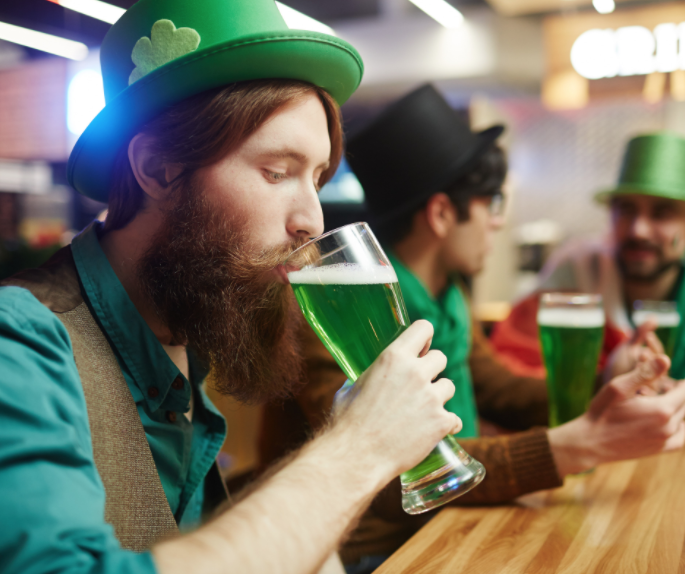By: Heidi Wagenbach
March 17th is quickly approaching, so that means people will soon be decked out in green, buying dyed food, and sporting Leprechaun hats in no time. St. Patrick’s Day is a holiday that a lot of Americans celebrate (57% of the population, to be exact… almost 35 million people in the US have Irish heritage). It’s another one of those days that doesn’t really mean a whole lot to me, other than bring back elementary school memories, when my mom (like a lot of parents) would want me to wear a clover shirt and striped green and white socks to celebrate. (I obliged, in fear of being pinched by other kids if I didn’t).
But how do people, the economy, and restaurants change during this day to embrace the luck o’ the Irish? Let’s find out.
A Little History Of Who This Guy Was
Saint Patrick, as opposed to popular belief and folklore, was actually born in Britain, at the end of the 4th century. He was kidnapped as a teen by Irish raiders and sold as a slave to a Celtic priest. He worked for many years as a shepherd, then escaped back to his home nation. He eventually returned to Ireland as a Christian priest.
And Now The Moment You’ve All Been Waiting For…
#1
Cabbage shipments increase by 70% in the week leading up to St. Patty’s.
#2
Over 30% of Americans celebrate by preparing a– “traditional” Irish meal, including dishes like Irish bread soda and Shepherd’s pie. Irish-American cookbook author Margaret Johnson said that corned beef and cabbage is really an American interpretation of more authentic Irish cuisine. And she views beer tinted with a green shade to be “offensive.”
#3
The average person will consume about 4 drinks on St. Patrick’s Day. 75% of fatal car crashes in 2016 involved at least one person with almost 2 times the legal limit in their system.
#4
13 million pints of Guinness beer will be bought and drunk; this equates to nearly 819% more than usual sales (it is the most popular beer in Ireland, after all!)
#5
Chicago dyes a portion of the river green every year, throwing in 40 tons of vegetable dye to celebrate the saint (whose signature color, surprisingly, was blue), and lasts for a few hours.
#6
McDonald’s minty-green Shamrock Shake that’s available for only a limited time has almost 700 calories.
#7
Saint Patrick’s day originally was not so party-oriented; until the 1700s, it was a day in the Catholic calendar to observe the popular saint in Ireland through reflection and prayer. What we know today (aka beer and… more beer) began in the early 20th century, when Irish immigrants in the US celebrated their bloodline.
#8
St. Patrick’s feast days have been celebrated by the Irish ever since the 9th century.
#9
In 1903, St. Patrick’s became an official holiday in Ireland and became more popular for everyone, not just the religious folk. How did they celebrate? With a beer, of course!
#10
Americans will spend over $5.6 billion on St. Patty’s… whether that be on decor, costumes, festive treats, liquor… or all the above!
In Conclusion…
St. Patrick’s Day means a lot to a lot of people. It sometimes feels like after the chaos of October, November, and December with Halloween, Thanksgiving, and Christmas, the rest of the year gets blurred together, with more minor holidays that while important, aren’t as recognized. Regardless, hopefully you’ll take what you learned in this blog and inform your guests of the history and more statistical side of this native Irish holiday!
Sources:
15 St. Patrick’s Day Facts That Might Surprise You
10 Fun Facts About St. Patrick’s Day
Some Fun Facts About St. Patrick’s Day

